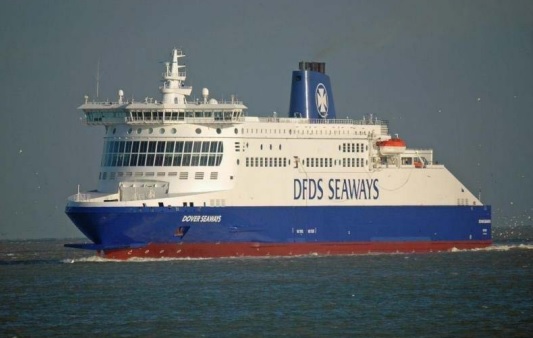On 9 November 2014, the cross-channel ferry Dover Seaways struck the end of a breakwater while departing from Dover, United Kingdom for passage to Dunkirk, France. The ferry’s bow was damaged but the vessel returned to its berth without assistance. The impact resulted in several minor injuries to passengers and crew. There was no pollution.
UK MAIB has issued investigation report on the accident stating that the contact with the breakwater resulted from a loss of directional control as Dover Seaways turned towards the harbour’s eastern entrance. The ferry’s engines were set to ‘full astern’ and the starboard anchor was let go, but these actions did not prevent the ferry from running into the breakwater at 3.5kts. No announcement was made to warn the passengers and crew.
The loss of directional control was due to a change in the mode the steering control system was operating. The change in steering mode was not intentionally initiated and remains unexplained. The response of the bridge team was positive but the action to stop the ferry was taken too late. This accident occurred 17 months after the ferry Sirena Seaways made heavy contact with the quay in Harwich, United Kingdom, after which DFDS A/S was recommended to consider ways in which passengers and crew could be warned of an impending accident

The report has reached to the following conclusions
- Directional control of Dover Seaways was lost due to the steering control transferring from the port bridge wing control console to one of the trackpilots.
- The cause of the transfer of the steering control from the port wing console to a trackpilot has not been identified.
- The re-establishment of steering control, the setting of the main engines to ‘full astern’ and the letting go of the starboard anchor, were too late to be fully effective.
- The bridge team were not fully familiar with some aspects of the steering control system and did not monitor the rudder angle indicators.
- The minor injuries sustained by several passengers and crew could have been avoided if a warning broadcast had been made.
Learn more by reading UK MAIB report on Dover Seaways
Source & Image Credit: UK MAIB































































